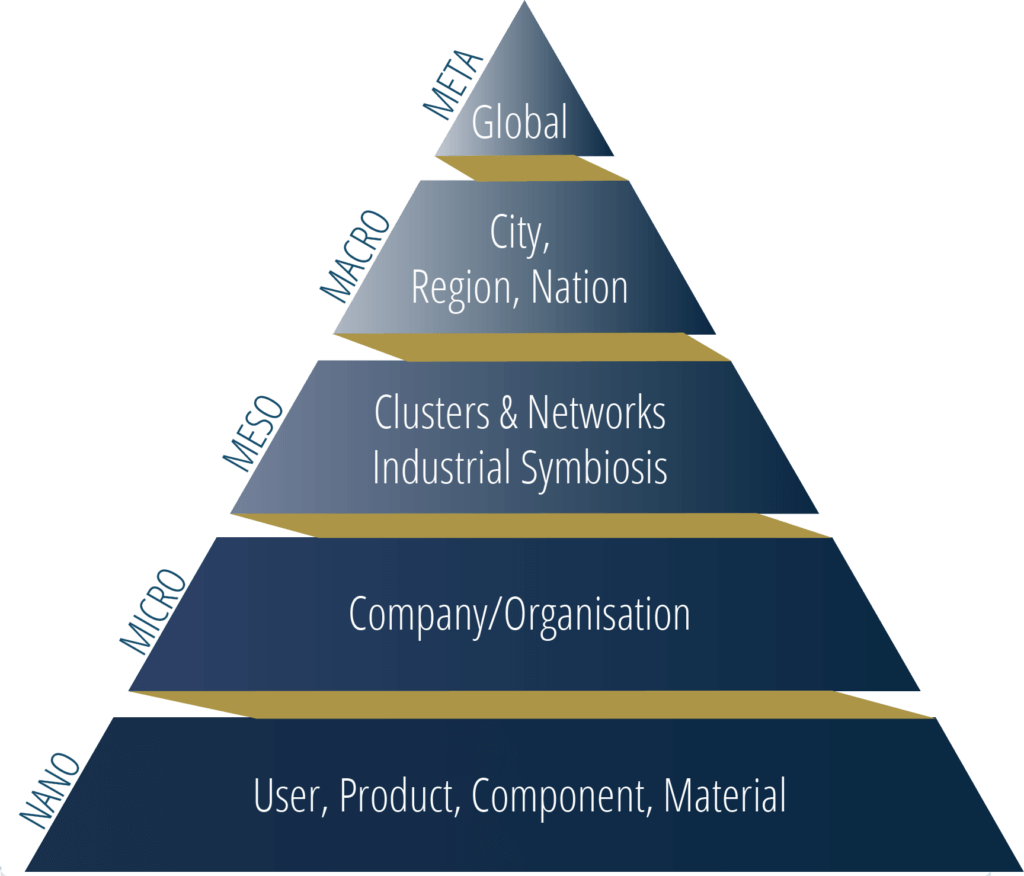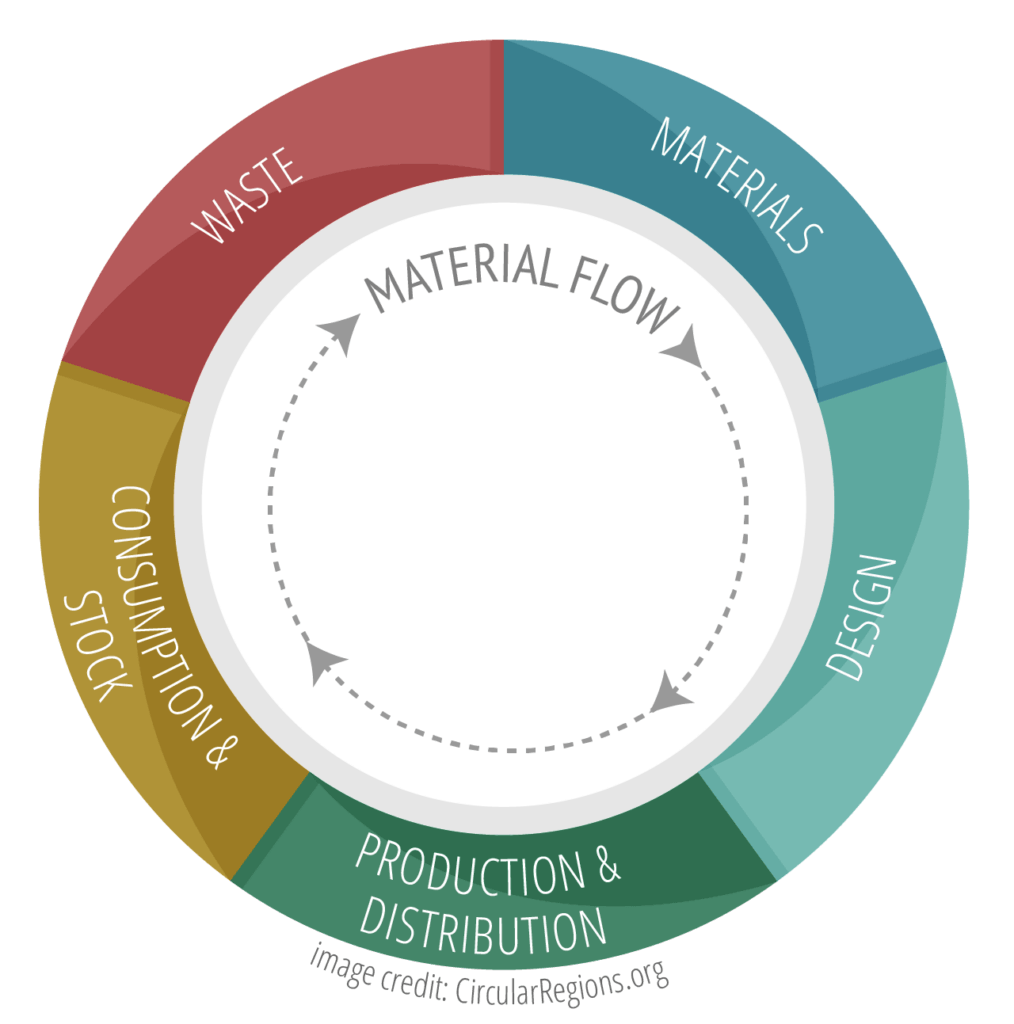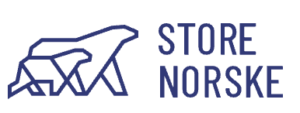Reuse of buildings
Andøy, Nordland, Norway
CONDENSED CASE STUDY

IMPACT
MODEL
CYCLE PHASE
STATUS & TIMELINE
| Milestone title | Date | Content |
|---|---|---|
| ie.start date |
DESCRIPTION
Background and starting point
Store Norske Spitsbergen Kullkompani (SNSK) owns a number of industrial and residential buildings in connection with its operations, both in Svea and in Longyearbyen. When the Storting decided that the mining operations in Svea should be closed down in 2017, this meant a major clean-up job and a return of the area with the least possible damage to the landscape and environment. For SNSK, this also meant selling machines and equipment, and tearing down and handling waste from buildings. When it came to the removal of residential and commercial buildings, emphasis was placed on cost-effective redevelopment. It gradually became clear that it was possible to realize large gains from the sale of equipment, and in the work with this, the focus on reuse was intensified – also for the building stock.
New solution
Despite the fact that demolition and waste management were considered the most reasonable in most cases, there was a recognition that the building stock in Svea could be a resource for the whole of Svalbard. Reductions in greenhouse gas emissions related to avoiding shipping and construction of new buildings were potentially large. The building stock was therefore seen in a larger societal and environmental perspective where not only costs were considered. This has led SNSK to try to reuse as much of the building stock as possible internally on Svalbard. The buildings are mainly plastic halls, steel sandwich halls, barrack modules and wooden cabins.
Results
Reuse of the building stock in connection with the closure of Svea is still in an early phase. Only a small part of the potential is realized. Final effects * will depend on which and how many of the buildings are eventually reused.
| Costs | Greenhouse gas emissions |
|---|---|
| Barrack module: 93% cost reduction
Warehouse: 50% cost reduction |
Barrack module: 82% less CO2 emissions
Warehouse: 94% less CO2 emissions |
| Construction of a new barrack module constitutes a total cost of NOK 30,000 / m2, while reuse costs NOK 2,000 / m2. This is a difference of NOK 28,000 / sqm2, or a reduction of 93%.
Installation of a new warehouse of the plastic hall type constitutes a total cost of NOK 2,000 / m2, while reuse gives a cost of NOK 1,000 / m2. This makes a difference of NOK 1,000 / m2, a reduction of 50%. |
Construction of a new barrack module ** is intended to constitute a CO2 emission of 170 kg / m2 while reuse will constitute a CO2 emission of 30 kg / m2. This constitutes a difference of 140 kg / m2, a reduction of 82%.
Installation of a new warehouse is calculated to constitute a CO2 emission of 130 kg / m2 while reuse is calculated to a CO2 emission of 8 kg / m2. This makes a difference of 122 kg / m2, a reduction of 94%. |
* Figures above are based on calculations performed by LPO prior to the project. In retrospect, SNSK sees that in some areas this deviates from real conditions. For example. Construction of halls is much more expensive than expected, possible due to. high uncertainty or little competition.
** New construction: remediation, production and transport from the mainland are included. Reuse: transport internally on Svalbard is incl.
Success criteria
Based on the experiences gained so far in the project, the following criteria are highlighted as particularly important for the successful reuse of buildings in this project:
Commitment – The original plan, and the state funds allocated, included only the redevelopment of buildings. Personal involvement has been important in expanding the project from only applying to demolition and redevelopment to also include the reuse of fully functional buildings. In addition, personal commitment has been important to ensure progress and to overcome barriers.
Visibility – In the work of creating awareness and impact for reuse, it has been crucial to highlight possible positive effects. The project manager received external assistance to calculate the effects of any reuse – both in relation to costs and an LCA-based study on the environment. This type of effect calculation helped to put the project in a larger context at the same time as it clarified possible effects on costs and the environment.
Preparations – A good deal of resources have been used to map the building stock, as well as to clarify practical and legal aspects of reuse. Understanding this has been complicated and is a recognition that projects related to the reuse of buildings and building materials require significant preparation and clarification before it can be carried out.
Description of the process
The decommissioning and clean-up is divided into three phases: clean-up of Lunckefjell mine starting in March 2019, clean-up of Svea mine starting in spring 2020 and clean-up of the community associated with Svea mine in 2021. In 2019, SNSK started the process of selling and rehabilitating assets, and one person was appointed to lead this work. In the funds allocated by the state, it was emphasized that the work should be done cost-effectively. It became clear that much of the building stock could be reused internally on Svalbard and that this would have major environmental benefits compared to decontaminating and then producing, transporting and building new. To make the gains visible, an external consultant was hired to calculate the environmental and cost effects of reuse. This was important to put the project in a larger context and to have an impact internally.So far, two types of buildings have been reused: a warehouse has been dismantled and intended to be reused by Avinor at the airport on Svalbard, and several barrack modules have been reused by SNSK itself in connection with the clean-up project. There are currently plans for the reuse of two or three more buildings.
Bakgrunn og utgangspunkt
Store Norske Spitsbergen Kullkompani (SNSK) eier en rekke industri- og boligbygg i forbindelse med sin virksomhet, både i Svea og i Longyearbyen. Da Stortinget vedtok at gruvedriften i Svea skulle nedlegges i 2017 innebar dette en stor oppryddingsjobb og en tilbakeføring av området med minst mulig skade på landskap og miljø. For SNSK innebar det også å selge maskiner og utstyr, og å rive og håndtere avfall fra bygninger. Når det kom til fjerning av bolig- og næringsbygg var det anslagsvis lagt vekt på en kostnadseffektiv sanering. Det ble etter hvert tydelig at det var mulig å realisere store gevinster fra salg av utstyr, og i arbeidet med dette ble fokus på ombruk intensivert – også for bygningsmassen.
Ny løsning
Til tross for at riving og avfallshåndtering i de fleste tilfellene ble ansett som rimeligst, vokste det frem en erkjennelse om at bygningsmassen i Svea kunne være en ressurs for hele Svalbard. Reduksjon i klimagassutslipp knyttet til å unngå frakt og oppføring av nye bygninger var potensielt store. Bygningsmassen ble derfor sett i et større samfunns- og miljøperspektiv der ikke bare kostnader ble vurdert. Dette har ført til at SNSK skal forsøke å ombruke så mye av bygningsmassen som mulig internt på Svalbard. Bygningene er i hovedsak plasthaller, sandwichhaller i stål, brakkemoduler og trehytter.
Resultater
Ombruk av bygningsmassen i forbindelse med nedstengingen av Svea er fortsatt i en tidlig fase. Kun en liten del av potensialet er realisert. Endelige effekter* vil være avhengig av hvilke og hvor mange av bygningene som til slutt blir gjenbrukt.
| Kostnader | Klimagassutslipp |
|---|---|
| Brakkemodul: 93% kostnadsreduksjon
Lagerhall: 50%kostnadsreduksjon |
Brakkemodul: 82% mindre CO2 utslipp
Lagerhall: 94% mindre CO2 utslipp |
| Bygging av ny brakkemodul utgjør en totalkostnad på 30.000 kr/m2 mens ombruk koster 2000kr/m2. Det utgjør en forskjell på 28.000kr/kvm2, eller en reduksjon på 93 %.
Montering av ny lagerhall av typen plasthallhall utgjør en totalkostnad på 2000kr/m2 mens ombruk gir en kostnad på 1000kr/m2. Det utgjør en forskjell på 1000kr/m2, en reduksjon på 50 %. |
Bygging av ny brakkemodul** er beregnet til å utgjøre et CO2 utslipp på 170 kg/m2 mens ombruk vil utgjør et CO2 utslipp på 30 kg/m2.Det utgjør en forskjell på 140 kg/m2, en reduksjon på 82 %.
Montering av ny lagerhall er beregnet til å utgjøre et CO2 utslipp på 130 kg/m2 mens ombruk er beregnet til et CO2 utslipp på 8 kg/m2. Det utgjør en forskjell på 122 kg/m2, en reduksjon på 94 %. |
*Tall over er basert på beregninger utført av LPO i forkant av prosjektet. I etterkant ser SNSK at dette på enkelte områder avviker fra reelle forhold. F.eks. Oppføring av haller er mye dyrere enn antatt, mulig pga. høy usikkerhet eller lite konkurranse.
** Nybygg: sanering, produksjon og transport fra fastlandet er inkl. Ombruk: transport internt på Svalbard er inkl.
Suksesskriterier
Basert på de erfaringene som er gjort så langt i prosjektet trekkes følgende kriterier frem som spesielt viktige for å lykkes med ombruk av bygg i dette prosjektet:
Engasjement – Den opprinnelige planen, og de statlige midler som ble bevilget, omfattet kun sanering av bygg. Personlig engasjement har vært viktig for å utvide prosjektet fra å kun gjelde riving og sanering til også å omfatte ombruk av fullt funksjonelle bygg. I tillegg har det personlige engasjementet vært viktig for å sikre fremdrift og å overvinne barrierer.
Synliggjøring – I arbeidet med å skape bevissthet og gjennomslag for ombruk har det vært avgjørende å synliggjøre mulige positive effekter. Prosjektleder fikk ekstern bistand til å beregne effektene av eventuell ombruk – både i forhold til kostnader og en LCA-basert studie på miljø. Denne typen effektberegning bidro til å sette prosjektet i en større kontekst samtidig som det tydeliggjorde mulige effekter på kostnader og miljø.
Forberedelser – En god del ressurser har gått med til å kartlegge bygningsmassen, samt å avklare praktiske og juridiske sider ved ombruk. Å sette seg inn i dette har vært komplisert og er en anerkjennelse av at prosjekter knyttet til ombruk av bygg og byggematerialer krever vesentlige forarbeid og avklaringer før det kan gjennomføres.
Beskrivelse av prosessen
Avviklingen og oppryddingen er delt inn i tre faser: opprydning av Lunckefjell gruve med oppstart mars 2019, opprydning av Svea gruve med oppstart vår 2020 og opprydning av samfunnet tilknyttet Svea gruve i 2021. SNSK startet i 2019 prosessen med salg og sanering av eiendeler, og en person ble utpekt til å lede dette arbeidet. I midlene staten bevilget var det vektlagt at arbeidet skulle gjøres kostnadseffektivt. Det ble klart at mye av bygningsmassen kunne gjenbrukes internt på Svalbard og at dette ville ha store miljøfordeler sammenlignet med å sanere og deretter produsere, frakte opp og bygge nytt. For å synliggjøre gevinstene ble en ekstern konsulent engasjert for å beregne miljø- og kostnadseffektene av ombruk. Dette var viktig for å sette prosjektet i en større sammenheng og for å få gjennomslag internt. Til nå er to typer bygninger blitt ombrukt: en lagerhall er demontert og tenkt gjenbrukt av Avinor på flyplassen på Svalbard, og flere brakkemoduler er ombrukt av SNSK selv i forbindelse med oppryddingsprosjektet. Det fins per i dag planer for ombruk av ytterligere to-tre bygg.
Login to download a .pdf




